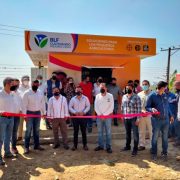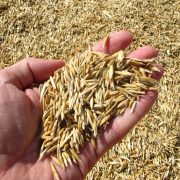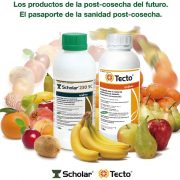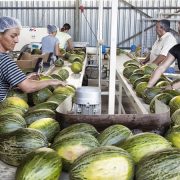Isabel G. Tejerina: “The agri-food exports to Latin America almost doubled in the last 7 years”
The minister of Agriculture of the Spanish Government takes stock of the exporter of agri-food sector, which has continued to grow even during the critical years of economic recession. Latin American markets did not go unnoticed in the analysis of Isabel García Tejerina.
eComercio. The Spanish food exports continue to rise year after year. Although its primary destination are other countries in the European Union, to what extent the Latin American markets are covered?
Isabel García Tejerina. Our main market is still the EU, but is making a significant effort trying to diversify and expand destinations and we are seeing in recent years are gaining presence in third countries. Comparing the 2009-2011 triennium 2012-2014 with the value of our foreign trade in agri-food sector grew 24%, while in the same period trade with third countries grew by 44%, which shows a clear diversification.
eComercio. And there, what role do Spanish-speaking countries?
IGT. Latin America is central and should be noted that exports to this destination have nearly doubled from 597 million euros in 2008 to 1,120,000,000 euros in 2014 has also increased the percentage share of these exports in total, with growth of 14.7% between 2008 and 2011 and increased slightly more moderate, 11.6% between 2011 and 2014.
eComercio. Trade relations of the EU with the United States are today. However, what other agreements with Latin America must be reviewed?
IGT. Trade policy is a clear priority for both the European Union and Spain. Do not forget that, by some estimates, 90% of world economic growth will occur outside the EU, so we should be in these markets and take advantage of all opportunities that arise. As pointed out by the Agreement with the United States, TTIP is entirely valid and is a clear priority on both sides of the Atlantic, the common commercial policy but goes far beyond.
eComercio. Where? What are the current priorities?
IGT. First, although they have not yet achieved the expected results, we continue to support the negotiations of the Doha Round. Later this year there will be a ministerial conference in Nairobi where some progress may occur and establish a roadmap that allows close in the next Ministerial Conference of 2017. On other trade agreements with third parties that the EU continues to negotiate, we should mention that of Mercosur, which is in an impasse but could be reactivated; the review of others such as Chile and Mexico are another clear priorities in trade policy.
eComercio. Climate change is increasingly a reality than a theory, both in Europe and Latin America. In Spain there are already subtropical productions such as mango, avocado, cherimoya and attempts are being made with pitaya … In the medium to long run, do you think that climate change will alter the Spanish culture and start producing other more tropical?
IGT. According to various studies available, climate change is not only a rise in temperature, but carries an increased extreme weather events, which could complicate the feasibility of tropical crops, very sensitive to sudden changes in temperature and water stress . Given that studies so far exist in relation to the effect of climate change still show mixed results and in some cases divergent, today can not be taken to imply an “advantage” for the sector of the Spanish tropical fruits, but more research is needed on how it may affect the Spanish agriculture and how to conduct his adaptation of the best way for the sector. This research is certainly a priority for the Ministry that I lead.
eComercio. Europe, the United States, China, Latin America … If you had a food company and would like to open market, what part of the world you choose?
IGT. It is not an easy answer depends primarily on the product. considering the developments in recent years, if frozen pork meat, no doubt Asia, but if we speak of Iberian ham products and particularly surely think of Mexico or Colombia. You also need to consider the volume of exports, if we talk about large numbers would surely be Asian markets such as China or Japan, but if we talk about products with high added value, which are exported in more limited quantities, the chances are increased and appear non-EU European and Latin American markets. Nothing is exclusive, we must be prepared to sell at any site where our product is in demand and reach a price that makes it profitable. What it is to be prepared for the world market, which is more complicated than the Community market.
eComercio. Agricultural eCommerce is an online publication that provides information on food production and gastronomy of the European Union and Latin America. What do you think of an initiative of this kind?
IGT. Honestly I think a great initiative. E-commerce is becoming increasingly important, according to latest data from the National Commission of Markets and Competition electronic commerce in Spain grew 24.8% in 2014 to reach a figure of 15.891 million euros. Food is no stranger to this growth and is one of the industries with the highest percentage of businesses reaching 4.1% of the total. Also in Latin America are occurring so spectacular growth between 2010 and 2013 sales grew 115.5% followed by highlighting Brazil and Argentina and Méjico.A Despite these figures, there is significant potential for growth on both sides, so an initiative like this can play a key role in the development of a trade that increasingly must have a greater role and that can offer great opportunities for both food companies and consumers.















